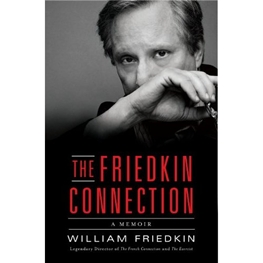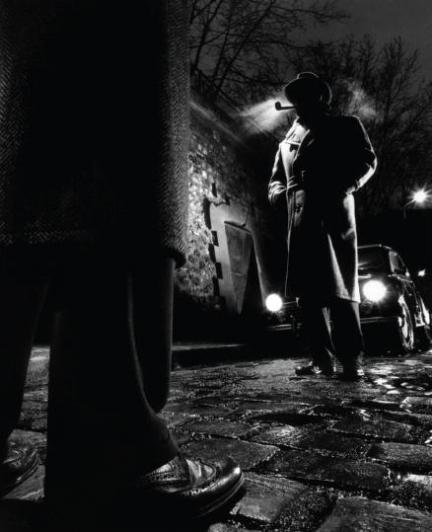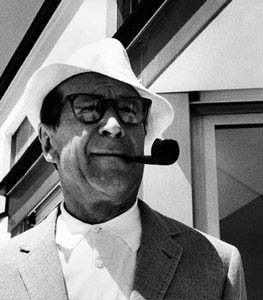Mystery writer Georges Simenon “probably invented film noir,” said Academy Award-winning director William Friedkin on Thursday at a tribute to the famed Belgian author. The panel discussion and cocktail party at the W Hotel in Hollywood was hosted by Georges Simenon Ltd. and the Ile de France Film Commission.
One of the best-selling writers of the 20th century, Simenon (1903-89) was uncommonly prolific – he produced 191 novels and 160 short stories, in addition to other writing.
His spare, minimalist crime stories (particularly his tales of the pipe-smoking café-frequenting Inspector Jules Maigret) clicked with millions of readers and the likes of William Faulkner, Gabriel Garcia Marquez, Jean Renoir, Claude Chabrol and Akira Kurosawa.
Simenon’s work inspired 70 feature films and 500 hours of TV worldwide.
“I started reading Simenon around the time I made ‘The French Connection,’ ” said Friedkin. “I certainly was influenced by his writing. He’s thought of as a thriller writer but he defies genre. The ‘romans durs’ [tough novels] were the ones that most resonated with me. They’re so simple and yet complex in their portrayal of character.”
Friedkin pointed to “The Man on the Eiffel Tower” (1949, Burgess Meredith) as one of the most exciting Simenon adaptations. Based on the novel “A Battle of Nerves” and starring Charles Laughton as Maigret, Friedkin said the scene in a crowded restaurant as the murderer and detective get into a heated talk amid ever-louder violins is “absolutely magnificent and may be my favorite scene in the movies.”
 (More of Friedkin’s cinematic influences and inspirations likely will be revealed in his forthcoming book, “The Friedkin Connection: A Memoir,” which he confirmed at the party is scheduled for publication in March 2013.)
(More of Friedkin’s cinematic influences and inspirations likely will be revealed in his forthcoming book, “The Friedkin Connection: A Memoir,” which he confirmed at the party is scheduled for publication in March 2013.)
Joining Friedkin on the panel were John Simenon (one of the author’s sons), scriptwriter John Brian King and Olivier-René Veillon of the Ile de France Film Commission.
John Simenon confirmed that his father’s friendships with cops, criminals and doctors (he also read medical journals regularly) lent his work a gritty authenticity. Furthering the inventor-of-film-noir description, Veillon explained that the city of Paris, which was radically rebuilt and modernized in the 1860s according to Baron Haussmann’s vision, served as a gift to artists, especially Simenon.
“All the characters are defined by their location and their relationship with the city,” Veillon said. Just as the reconceived Paris and its denizens provided rich fodder for Simenon’s imagination, his fiction is ripe for new adaptations on screen.
Friedkin also asked John Simenon to recount his relationship with his father. “He was demanding in terms of how to conduct yourself and how to be a man. But he was there and he was very present, much more present than many fathers are today and more present than I can be for my son.”
One of the first questions from the audience came from a sly Brit, who wanted to know the secrets to Simenon’s sex life, referencing the notion that Simenon was one of the great Casanovas of his time and claimed to have slept with 10,000 women.
First noting that he had not inherited this trait, John Simenon said this comment was “totally overblown” and “more of a joke” stemming from a reported conversation with director Federico Fellini. Between his work, his children and his love for food and cooking, that much bed-hopping would have been a mighty scheduling challenge.
His personal life aside, one of the most important women Georges Simenon knew was the French novelist Colette (1873-1954), whom he met early in his career and who advised him to eschew the literary, to cut his stories to the bone.












From FNB readers